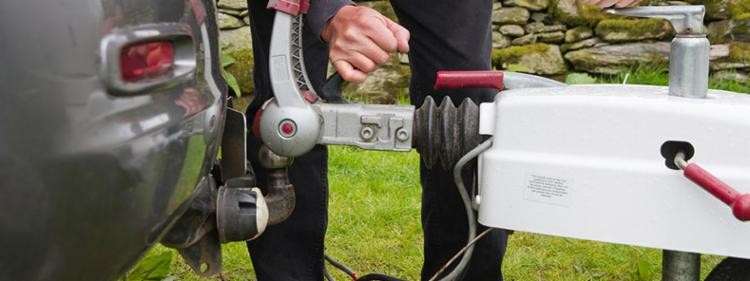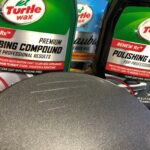Buying a car can be a significant expense, but what if you could drive away in a quality vehicle for less than market value? Repossessed cars, often called “repo cars,” present such an opportunity. When a borrower defaults on their auto loan, banks and financial institutions reclaim the vehicle. These “bank repo cars” are then sold to recoup losses, frequently at prices below typical used car prices. However, navigating the world of repo cars requires knowledge and caution. This comprehensive guide will walk you through everything you need to know about how to buy a bank repo car, ensuring you make an informed decision and potentially drive off with a great deal.
Understanding Bank Repo Cars
The term “bank repo car” refers to a vehicle that has been repossessed by a lender, typically a bank, credit union, or finance company. This happens when the original borrower fails to keep up with their loan payments, breaching the loan agreement. The lender, holding a lien on the car, has the legal right to take back the vehicle. It’s important to understand that repossession is a legal process, and while the grace period can vary by state, it can occur relatively quickly after a missed payment, as reported by the LA Times.
While lenders aren’t eager to repossess cars – their primary business is lending and earning interest – it becomes a necessary step to mitigate financial losses when borrowers default. By the time a repossession occurs, the vehicle owner may have missed several payments. Unfortunately, some owners, facing repossession, may neglect vehicle maintenance or even intentionally damage the car.
This means that bank repo cars can come in varying conditions. Some may be well-maintained vehicles from borrowers who encountered unexpected financial hardship. Others might show signs of neglect or even damage. This variability underscores the critical importance of thorough inspection before you consider buying a bank repo car. Unlike buying from a dealership, bank repo car purchases typically come without warranties, test drives, or return policies. “As is” is the standard, making due diligence essential.
Exploring Your Options: Where to Find Bank Repo Cars
When considering how to buy a bank repo car, understanding the different avenues available is key to finding the right vehicle and deal. Here are four primary methods:
1. Direct Purchase from the Lending Bank or Credit Union
One of the most direct routes to buying a bank repo car is by approaching banks and credit unions directly. Many financial institutions maintain a “repo list” or inventory of vehicles they’ve repossessed and are looking to sell. Often, these lenders are primarily focused on recovering the outstanding loan amount and may offer vehicles at competitive prices. In some cases, you might even be able to secure financing for the repo car directly from the same institution that repossessed it.
 Car being towed by a repo man.
Car being towed by a repo man.
Alt text: Car being repossessed by a tow truck, illustrating the initial stage of a bank repo car becoming available for sale.
However, buying directly from a bank usually means accepting the car in its current condition. Banks typically don’t invest in cleaning, detailing, or repairing repo cars before selling. They aim for a quick sale to minimize losses and move on. Therefore, if you choose this route, be prepared to potentially invest time and resources in getting the vehicle road-ready after purchase.
To buy bank repos directly, inquire with local banks and credit unions about their repo car lists. When you find a car of interest, research its market value using resources like the NADA Guide to determine a fair offer. Banks may consider your bid or wait for other offers, especially from dealerships. This process can sometimes take a few weeks. If your offer is accepted, ensure you thoroughly inspect the vehicle before finalizing the purchase. Bringing a mechanically knowledgeable friend for the inspection is highly advisable, especially if you’re not a car expert yourself.
2. Utilizing Repossessed Car Reseller Services
In today’s digital age, numerous online companies specialize in facilitating the sale of bank repo cars. These reseller services act as intermediaries, connecting lenders with potential buyers. Brandon Macomb, an expert in repossession sales, recommends seeking out resellers who facilitate transactions directly from lender to buyer without taking ownership of the vehicles themselves. This approach can reduce costs, as resellers who take ownership and transport vehicles incur extra expenses that ultimately get passed on to the buyer.
A significant advantage of using reputable reseller services is that they often maintain certain standards for the condition of the repo cars they list. Some may even clean, detail, and perform basic checks to ensure the vehicles are in running condition before listing them for sale. Furthermore, because these services typically don’t take ownership, they are often motivated to move inventory quickly with smaller markups, rather than aiming for high profits on each vehicle.
To buy a bank repo car through a reseller, search online for reputable services. Look for the make and model you desire on their platforms. Macomb cautions against resellers who charge upfront fees just for viewing vehicles or accessing inventory lists. Once you find a vehicle, place a bid at or above the minimum bid price. If your bid is accepted, always conduct a pre-purchase inspection. For out-of-state purchases, consider hiring an independent inspection service to assess the vehicle’s condition before you finalize the transaction.
3. Participating in Police Repo and Lender Car Auctions
Car auctions offer another avenue for finding bank repo cars. These auctions are diverse, ranging from those primarily catering to used car dealers to public auctions open to individual buyers. Government auctions, for instance, often feature impounded vehicles, including repossessed and confiscated cars from police departments and other agencies.
If you’re interested in auction buying, seek out auctions open to the public. Registration might be required beforehand, and it’s wise to review the auction inventory online before attending in person. Auction procedures for bidding and winning vary, so attending a couple of auctions beforehand to observe the process is a smart move. Typically, you’ll need to have pre-approved financing or cash readily available, and a deposit is usually required if you win a bid.
Auctions offer the benefit of inspecting available stock beforehand in many cases, allowing you to set a maximum bid. Prices can be competitive at auctions due to the absence of traditional intermediaries. However, the excitement of bidding can be a pitfall; avoid getting carried away and overpaying.
A drawback of auctions is that repo cars are often presented “as is,” potentially dirty, in need of repair, or even containing trash. Any issues become your responsibility immediately upon purchase. Additionally, competing with experienced used car dealers at auctions can be challenging. As Craig Howie reported for AOL Autos, some auctions might even have informal agreements among dealers to keep prices artificially low, making it harder for individual buyers to win desirable vehicles at bargain prices.
4. Purchasing from Used Car Dealerships
Used car dealerships represent a more conventional way to buy a bank repo car. Dealerships often acquire repo cars from auctions and then retail them to the public. The advantage of this route is convenience and potentially some added benefits. Dealerships typically clean up repo cars, may perform minor repairs, and might offer perks like short-term warranties or in-house financing.
Alt text: Stylized icon of a car, used as a visual element to separate content sections and enhance readability.
However, these added services and conveniences come at a cost. While the dealer may have purchased the vehicle at a repo auction, their goal is still to maximize profit. They factor in transportation, reconditioning, and overhead costs into the final price. Unless you are a skilled negotiator, bank repo cars at dealerships may not be significantly cheaper than other used cars on their lot. Consider this option if you value convenience and potentially some post-purchase support, but be prepared to pay a premium compared to other repo car buying methods.
Key Steps to Successfully Buying a Bank Repo Car
Regardless of the method you choose, certain steps are crucial for a successful bank repo car purchase:
- Thorough Research: Before you even start looking at specific vehicles, research the make and model you’re interested in. Understand its reliability, typical maintenance costs, and market value. This knowledge will help you assess whether a repo car is truly a good deal.
- Pre-Purchase Inspection is Paramount: Never buy a bank repo car sight unseen. Always inspect the vehicle thoroughly before making an offer or finalizing the purchase. If you lack mechanical expertise, bring a trusted mechanic or someone knowledgeable about cars with you. Pay close attention to the engine, transmission, brakes, tires, and overall condition, both inside and out.
- Understand the “As-Is” Nature: Remember that bank repo cars are typically sold “as-is,” with no warranties. Be prepared for potential repairs and factor those costs into your budget.
- Secure Financing in Advance: If you need financing, get pre-approved for a car loan before you start shopping for bank repo cars. This will give you a clear budget and make you a more competitive buyer, especially at auctions.
- Negotiate Smartly: Be prepared to negotiate the price, especially when buying directly from a bank or reseller. Knowing the car’s market value and the potential repair costs will strengthen your negotiating position.
- Be Wary of Scams: Exercise caution and be wary of deals that seem too good to be true or websites that demand upfront fees just to view inventory. Reputable sellers will allow you to inspect the car before you pay.
Conclusion: Drive Away with Savings
Buying a bank repo car can be a smart strategy to acquire a vehicle at a lower price. By understanding the process, exploring different buying avenues, and diligently inspecting any potential purchase, you can navigate the repo car market successfully. While risks exist, especially concerning vehicle condition, careful research and preparation can lead to significant savings and a rewarding car buying experience. With the right approach, you can confidently buy a bank repo car and potentially drive away with a fantastic deal.

